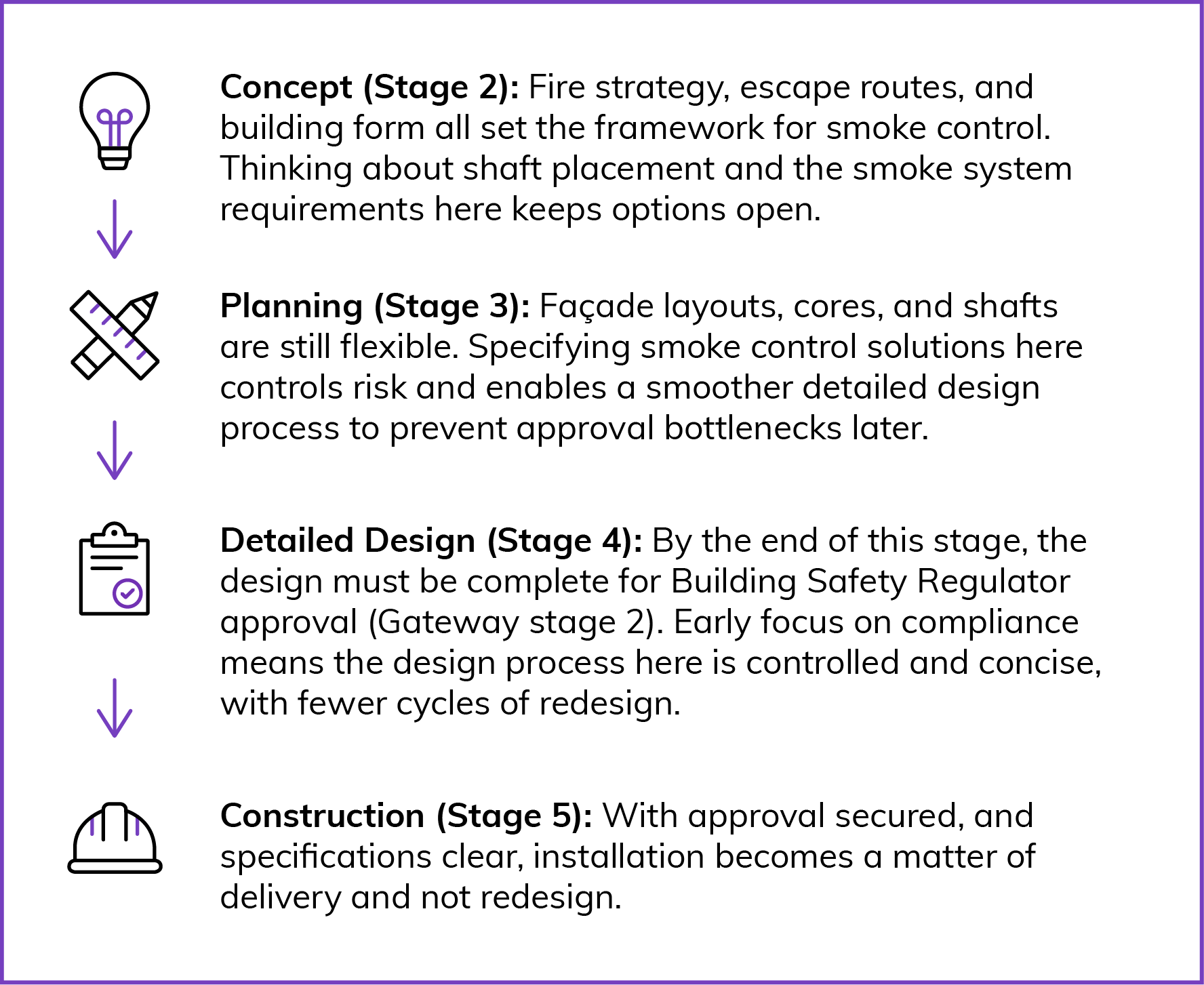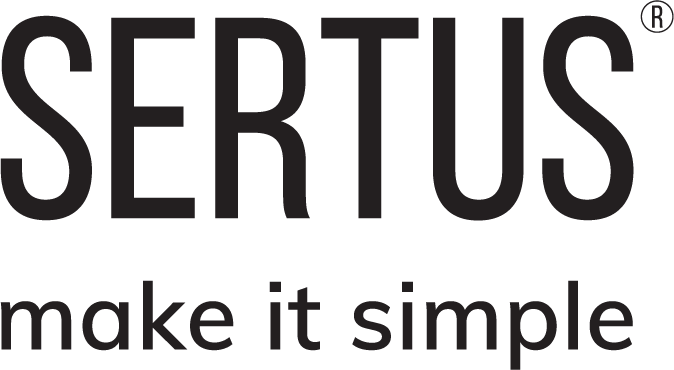At what stage of design should smoke control products be specified?
Despite the progress already made following the introduction of the Build Safety Act 2022, smoke control is still too often left until the latest possible moment during the design phase of a project. Why is this a problem? If smoke control is left until that point, design teams' risk multiple cycles of redesigns trying to mitigate compliance risks that could have been captured much earlier.
It’s understandable why smoke ventilation can sometimes slip down the list. Whilst Architects focus on structures and layouts, and MEP teams juggle multiple services, smoke control can feel like a niche that will get covered by the specialist designer later. “It’s a small package in the grand scheme of things” – but the implications of leaving this late and missing critical compliance risks can lead to catastrophic consequences to project timescales and amidst the backlog of Gateway 2 approvals.
Walking the Design Journey

Real world implications
Let’s put the above into practice and picture two projects; in the first, all smoke control design is left until Stage 4 and key risk areas are identified. Multiple changes to the buildings structure and core are needed to achieve compliance costing the client time, and money. The Regulator flags missing details, designs bounce back and forth and start on site is pushed back by several months as a result. In the second, smoke shaft construction is factored in at Stage 2, coordinated with structure and MEP. A compliant smoke control duct and smoke control damper is agreed in Stage 3, and by Stage 4, the design is finalised, compliant, approved, and ready to build.
The Building Safety Act has raised the bar.
Smoke control can’t be an afterthought – it must be embedded early enough in the RIBA journey to flow smoothly into BSR sign-off.
For specifiers, that means shaping compliance decisions before the specialist designer is even on board. Doing so keeps design control in the hands of the design team, protects project timelines, and avoids the risks of last-minute compromise.
